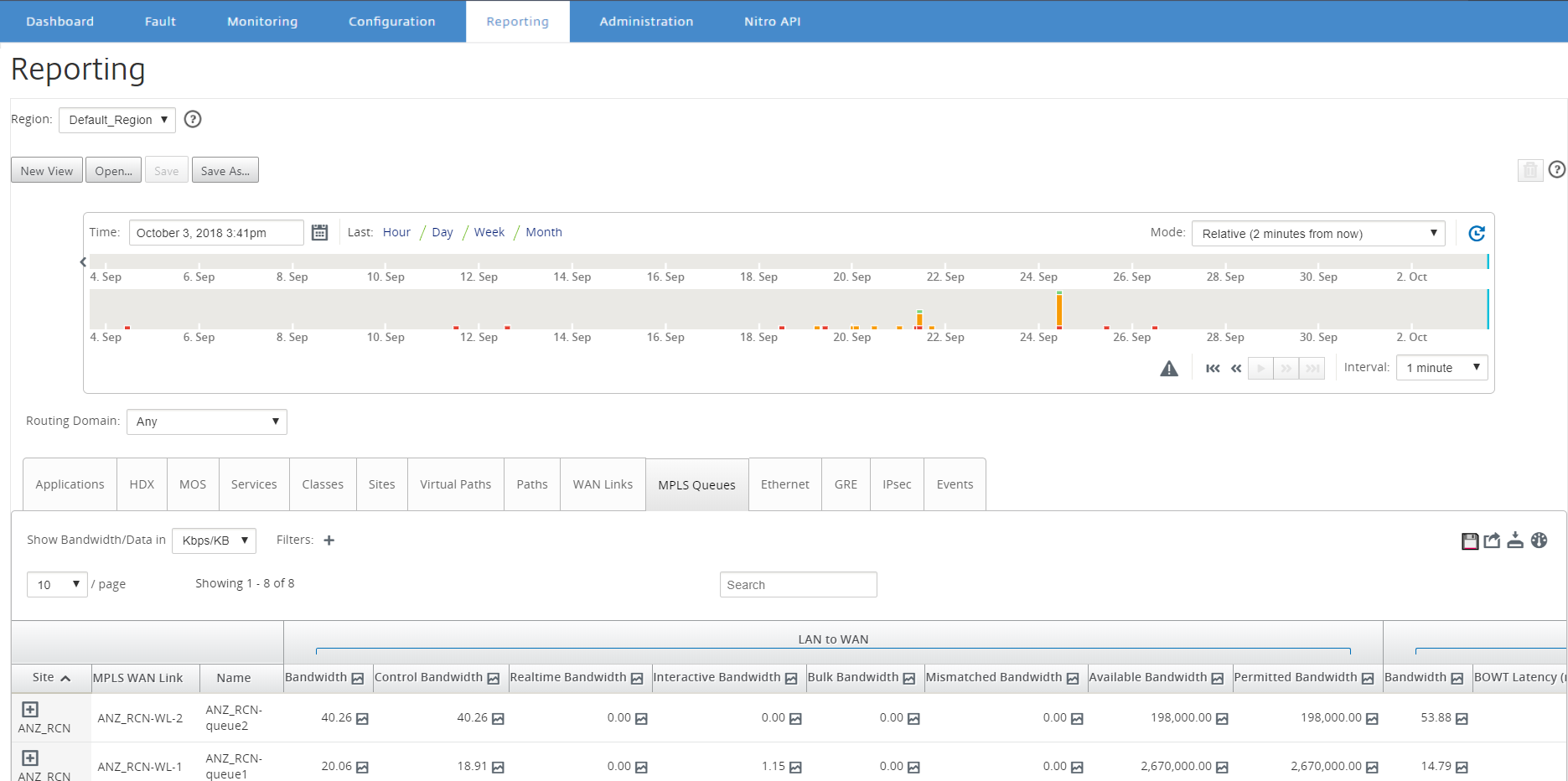MPLS queues report
MPLS Queues provide service queues controlled by standard Differentiated Services Code Point (DSCP) tags. The tags control the quality of service between two sites on the Virtual WAN.
MPLS Queues allow MPLS providers to identify traffic on the basis of DSCP markings, so that class of service can be applied by the provider.
For more information about configuring private MPLS WAN links on Citrix SD-WAN appliances, see MPLS Queues.
To view MPLS queue statistics:
In Citrix SD-WAN Center, navigate to Reports > MPLS Queues, and in the timeline control select a time period.
You can select and view reports of a particular time frame by using the timeline controls. For more information, see, Timeline controls.
You can also create, save and open report views. For more information, see, Manage views.

You can view the following metrics:
- MPLS WAN Link: Name of the MPLS WAN link that the MPLS queue is a member of.
- Name: The DSCP tag name.
- Bandwidth: Total bandwidth consumed by all packet types. Bandwidth = Control Bandwidth + Realtime Bandwidth + Interactive Bandwidth + Bulk Bandwidth.
- Control Bandwidth: Bandwidth used to transfer control packets that contain routing, scheduling, and link statistics information.
- Realtime Bandwidth: Bandwidth consumed by applications that belong to the realtime class type in the Citrix SD-WAN™ configuration. The performance of such applications depends to a great extent upon network latency. A delayed packet is worse than a lost packet (for example- VoIP, Skype for Business).
- Interactive Bandwidth: Bandwidth consumed by applications that belong to the interactive class type in the Citrix SD-WAN configuration. The performance of such applications depends to a great extent upon network latency, and packet loss (for example, XenDesktop®, XenApp).
- Bulk Bandwidth: Bandwidth consumed by applications that belong to the bulk class type in the Citrix SD-WAN configuration. These applications involve very little human intervention and are mostly handled by the systems themselves (for example, FTP, backup operations).
- Mismatched Bandwidth: Frames that do not match the defined DSCP tags are mapped to a default queue designated for mismatched bandwidth.
- Available Bandwidth: The sum of bandwidth allocated to all the WAN links of a site.
- Permitted Bandwidth: Bandwidth available for transmitting information.
- BOWT Latency: Best one-way time taken for a packet to move from one point to another, in milliseconds.
- Jitter: Variation in the delay of received packets, in milliseconds.
- Packets Lost: Number of packets lost.
- Loss: Percentage of packets lost.
- OOO: Percentage of packets that are not in the right order.
- Congestion: Congestion due to increased traffic or unexpected delay in packet flow in the WAN.
Note
Click the settings icon to select the metrics that you want to view.